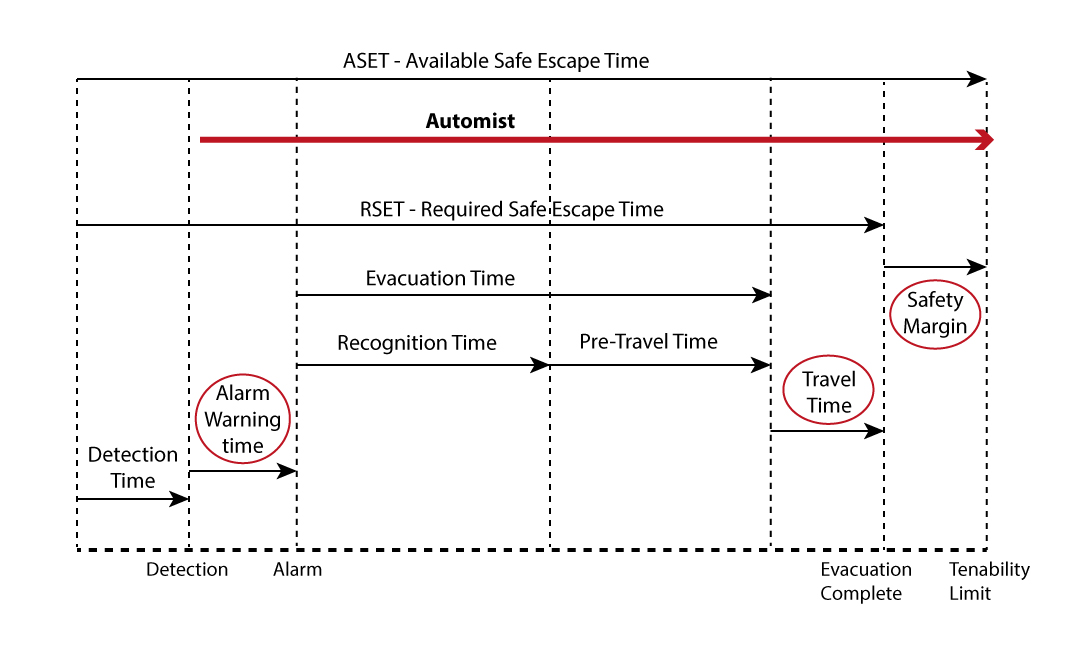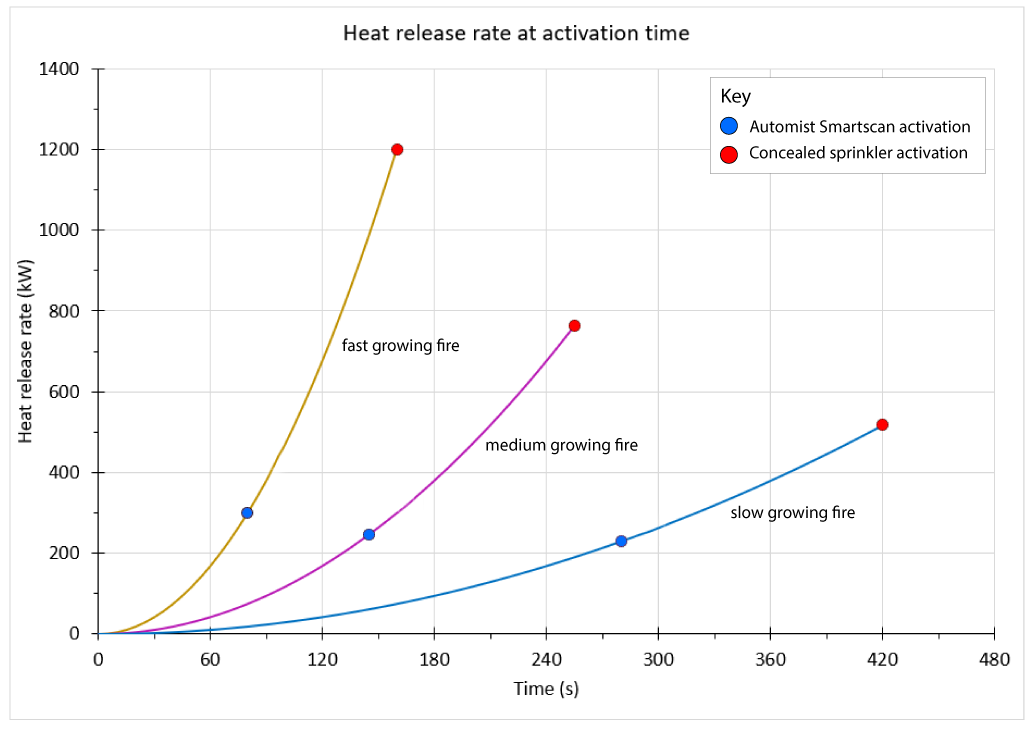Is there any fire engineering research that supports the use of Automist?
We have worked with numerous well-established independent fire engineers and published a few peer-reviewed papers.
- Probabilistic Modelling of Automist in Open Plan Dwellinghouses
The system can typically perform equivalent to or better than the minimum expectations of a domestic sprinkler system conforming to BS 9251:2021...Consideration has also been given to more ‘open plan’ designs which deviate from guidance through a probabilistic computational fire modelling assessment of a series of representative dwellinghouse arrangements. - Application of the Plumis Automist Smartscan system in two-storey, small paying guest sleeping accommodation
This document identifies that it appears reasonable for the Plumis Automist suppression system to be adopted as part of a performance-based, fire-engineered solution to support two-storey, small paying guest sleeping accommodation incorporating open plan areas. - Estimating the Suppression Performance of an Electronically Controlled Residential Water Mist System from BS 8458:2015 Fire Test Data
- Calculating a reliability target for Automist
- Replicating the activation time of electronically controlled watermist system nozzles in B-RISK
Automist has an effective RTI of 20 m½s½ and C factor of 0.25 m½s-½. The measured activation times of Automist can be 2.0 to 13.7 times faster than a concealed sprinkler, this significantly impacts its ability to aid means of escape.
Further details:
All fire safety is about time. Automist can provide early warning, control fire growth, and ensure conditions remain tenable for longer. This allows extra time for escape. A performance-based approach to means of escape design can take the form of a time-based comparison between:
- The time required to reach a place of relative safety (Required Safe Escape Time – RSET).
- The time available for occupants to reach a place of relative safety before untenable conditions are achieved (referred to as the Available Safe Escape Time - ASET) and;
A performance-based design aims for RSET to be less than ASET to allow safe evacuation. A detailed explanation of the approach can be found in PD 7974-6:2004. However, the key features of the process and the impact of Automist can be summarised as follows:
- RSET is the sum of the fire detection/alarm time, the recognition/response time and the travel time to a place of safety. Automist can help to reduce RSET by detecting a fire at an early stage. It does this by introducing more detection into the premises.
- ASET is determined by the onset of untenable conditions within the area being considered. Untenable conditions can be caused by smoke toxicity, and heat from fire and/or smoke. Automist can help extend ASET by limiting smoke production from a fire and by reducing heat exposure.

One of the common criticisms cited against innovation in active fire protection is a lack of historical data. Our studies show how improved performance (effective RTI of 20 m½s½ and C factor of 0.25 m½s-½), when compared to commonly used concealed sprinklers, can be used to compensate for unknowns (e.g. theoretical reliability). Automist can address fire risks quicker than an Early Suppression Fast Response (ESFR) sprinkler (effective RTI of less than 50 m½s½), which is afforded a reduced design fire (2.5MW) and often recommended for life safety application because there is evidence that even in the room or compartment of origin, persons are better protected. The measured activation times of Automist can be 2.0 to 13.7 times faster than a concealed sprinkler. This significantly impacts its ability to aid means of escape, especially as smoke is the most critical risk in domestic fires.

Any active water fire suppression system (AWFSS) with a low RTI and C factor is advantageous in a fire-engineered system. It will respond earlier than a standard system when a fire is in the earlier stages of development, and the fire size is less. Because the fire size is smaller, it will not require as much water to extinguish it and will place less demand on the water supply.
Learn more - Are there any fire engineers familiar with Automist?

